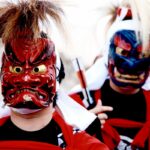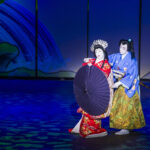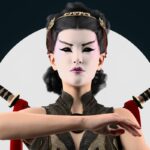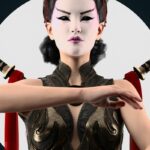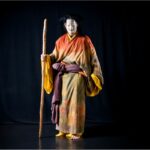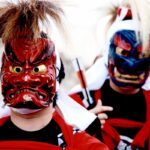One of the most striking poses that you can encounter in kabuki theater is that of the ‘nirami’. The pose is more widely known as the Cross-Eyed Glare and proves unmistakable when you see it performed with your own eyes.

The Cross-Eyed Glare is even known to mark a particularly high point of a theater performance when the drama reaches a peak with almost all the attention being directed to the lead actor.
Think of it as a climactic point during a film where the camera zooms in and captures an actor’s facial expression.
In this guide, we will look at the Cross-Eyed Glare in kabuki theater. Specifically, the history of the pose, other names for it, where you can see it, and what restrictions apply to it.
The Crosseyed Glare
The Cross-Eyed Glare originates in kabuki theater and is a classic example of Japanese expression. During a performance, you can expect much, if not all, of the focus to be drawn to the main actor as they strike the pose.
The rest of the performance around the lead actor seems to come to a halt which amplifies the glare itself even more.
Part of the reason why the glare is so renowned is simply how intense it can be when it is drawn out with eyes crossed
At a Kabuki theater performance, you may even hear audience members shout out (see also ‘The Cultural Significance Of Kabuki: Japanese Heritage And Influence‘).
This is known as ‘kakegoe’ where words of praise are exclaimed by the audience. The shout-outs will also include the actor’s name specifically before and after the Cross-Eyed Glare is made.
Other Names For The Crosseyed Glare
Aside from being known as the ‘nirami’, the Cross-Eyed Glare can also be known as the pose called ‘mie’. The word translates to ‘visible’ or ‘appearance’ in Japanese and relates to how the glare draws attention to the performance.
The glare looks prominent on its own yet it is what it represents that matters. As soon as the Cross-Eyed Glare makes an appearance, it marks an important, powerful part of the performance.
The ‘mie’ pose is also known to be ‘cut’ by the actor. Their eyes will be opened as far and wide as they can go for extra prominence. Should the actor want to seem agitated or even angry, the eyes will be crossed.
The History Of The Crosseyed Glare
The Cross-Eyed Glare, or ‘mie’, is said to have its origins in one of kabuki theater’s earliest and most renowned actors, Ichikawa Danjūrō I.
This was back in the Genroku era from 1688 to 1704, after Jōkyō and before Hōei. During the same time, the aragato style of kabuki theater was also said to have been founded.
When the Cross-Eyed Glare was first created, the actor’s right hand was held flat and perpendicular to the ground. At the same time, the actor’s left hand was also pointed upwards with the elbow bent.
Kabuki theater also uses the Cross-Eyed Glare alongside other prominent actions. Indeed, as the very first Danjuro became the greatest stage name in kabuki theater history, he used the Cross-Eyed Glare to turn a villain into water.
Alongside the glare, there was a sword display, foot-stamping, and a rather arrogant soliloquy.
Where You Can See The Crosseyed Glare
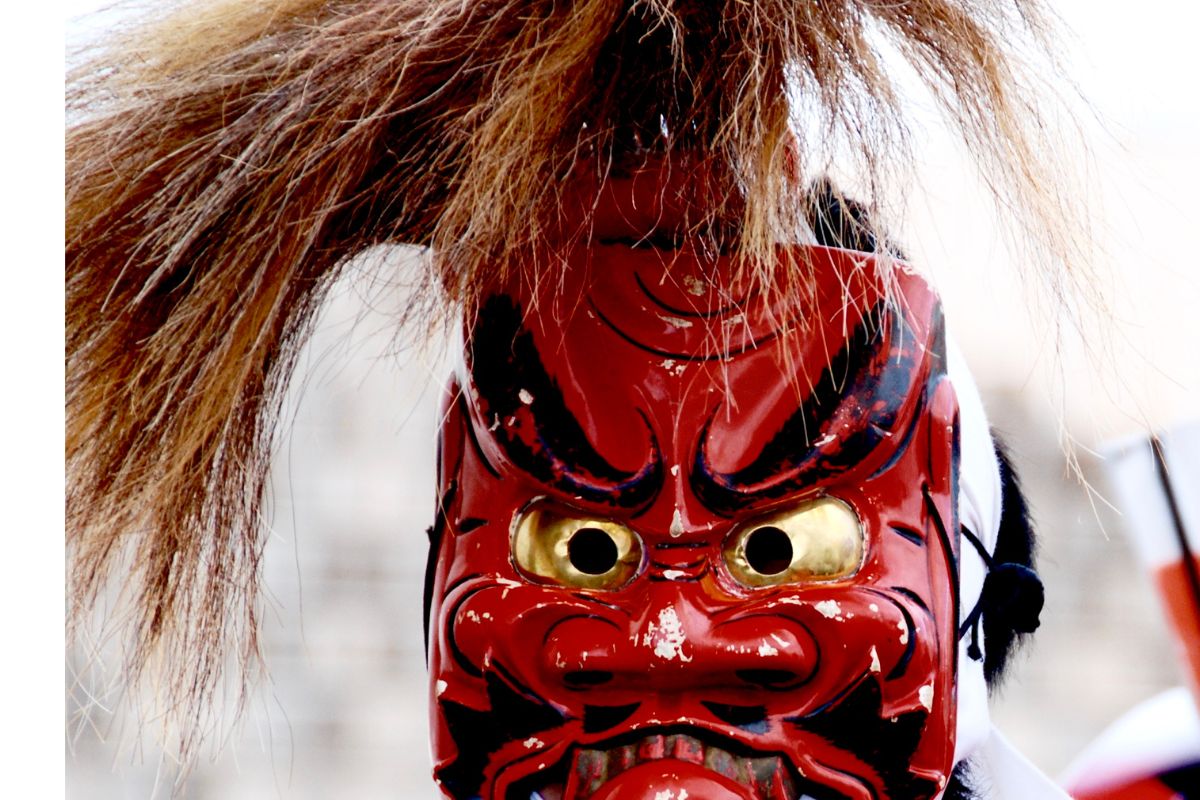
You may not even have to watch a theatrical performance to see the Cross-Eyed Glare in all its glory.
There is the Cross-Eyed Gallery which is based in Los Angeles where you can view and even buy a woodblock print featuring the expression.
The gallery has a range of curated and authentic Ukiyo-e woodblock prints. If you want to see the Cross-Eyed Glare marked out in all its glory, then you can order one of the prints and hang it up on your wall.
These Ukiyo-e woodblock prints come from renowned Japanese artists from the 19th and 20th centuries. You can expect to see woodblock prints from the likes of Kunichika, Yoshitoshi, Kunisada, and Hiroshiga.
If you desire to see a great example of the Cross-Eyed Glare, try to catch a performance of the play, ‘Shibaraku’. The pose is said to have been made famous by the character known as Kamakura Gongorō Kagemasa who is the play’s hero.
In fact, this is where the pose is said to have been invented by Ichikawa Danjūrō I although other actors now perform it in his honor (there are restrictions on who that can be).
During the initial performances of the pose, the actor would also stamp their left foot powerfully on the floor for emphasis.
Another play where you can see the Cross-Eyed Glare reenacted is ‘Narukami Fudō Kitayama Zakura’. This is a five-act drama that was first performed in 1742 in Osaka.
The drama was written specifically for the star, Ichikawa Ebizô II, who was touring Osaka at the time.
The Restrictions Of The Crosseyed Glare
The Cross-Eyed Glare is a prominent part of kabuki theater yet it may prove difficult to find. That’s mainly down to the restriction that only the Narita-ya family line is allowed to perform it.
However, if anyone sees a true Cross-Eyed Glare then it is said that they will enjoy good health and safety. That is not just restricted to the day of the performance but for the entire coming year.
Final Thoughts
As traditional Japanese performance art (see also ‘Kabuki: A Complete Guide To The Japanese Theater Experience‘), you should try to catch a kabuki theater performance and look out for the Cross-Eyed Glare.
The pose acts as the high point of a performance yet there is so much more to enjoy. That includes the mime, dance, and music as well as the visual elements.
From the stage to the sets, and the elaborate costumes, kabuki theater will be unforgettable. These are tales that have been derived from history and certain regional myths.
Kabuki theater has only experienced minor changes over time which marks it out as one of the finest elements of Japanese drama. The techniques and the performers themselves are directly descended from those original methods and actors.
Kabuki theater has barely changed in the centuries since it was originally devised. What should make a kabuki theater performance stand out is the use of the Cross-Eyed Glare but also the visual spectacle that surrounds it.
Frequently Asked Questions
What Is Said To Make Kabuki Theater Unique?
It may not be so much the theater performance as the stage itself that makes kabuki so unique.
The stage is typically equipped with many gadgets, from a revolving stage to trapdoors where actors can disappear as readily as they appear. Kabuki theater also comes with something of an intimate element.
That’s down to a footbridge, known as a hanamachi, which extends directly into the audience.
What Does Kabuki Theater Represent?
The cross-eyed Glare is a prominent part of kabuki theater yet there are certain expectations from any kabuki performance. Kabuki theater is devised from three kanji which are Chinese characters.
The ‘ka’ means sing, the ‘bu’ represents dance, while the ‘ki’ will mean skill. Therefore, with a kabuki theater performance, you should see true art of song and dance with a high element of skill.
- 16 Best Websites To Watch Japanese Movies With English Subtitles - May 11, 2023
- Is ZIPAIR The Best Airline For Traveling To Japan? - May 11, 2023
- Ryu Murakami Vs Haruki Murakami – Which One Should You Read? - May 11, 2023

